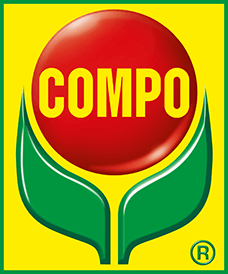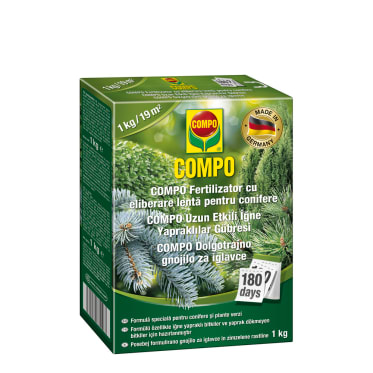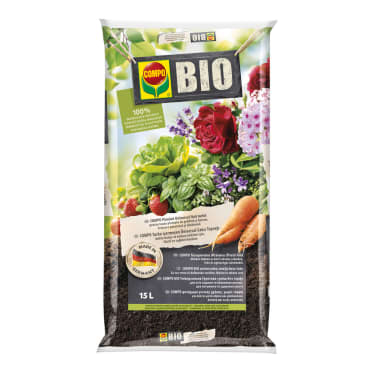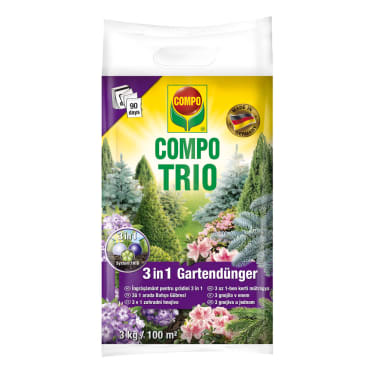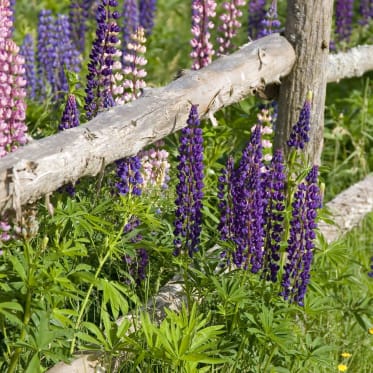Frequent search terms
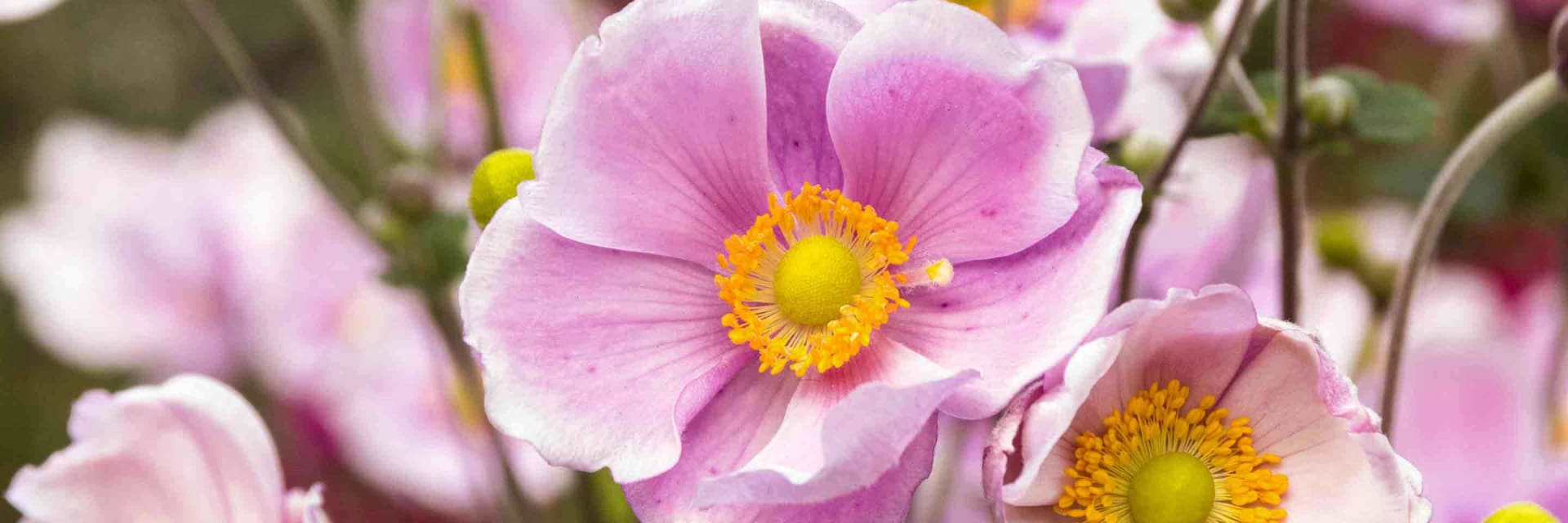
- COMPO
- Guide
- Plant Care
- Garden
- Garden care
- Winter hardy perennials for colourful autumn flower beds
Autumn perennials take the stage
Winter hardy perennials for colourful autumn flower beds
Since some plants will delight us with their beautiful flowers even in the autumn, there’s absolutely no reason whatsoever to say goodbye to flower beds at the beginning of this season! And to allow you to enjoy a colourful start to the autumn, we thought we’d tell you about our ten favourite autumn perennials.
Table of content
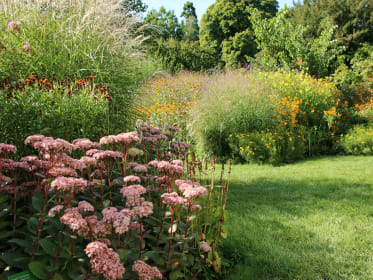
Colourful autumn flowers
Which perennials are right for an autumn flower bed?
1. Flowering autumn perennials
As summer flowers slowly take their leave, autumn perennials like the autumn anemone, yellow coneflower, stonecrop or garden chrysanthemum make their grand entrance. The flowering period of typical autumn perennials will usually begin in late summer and end in the autumn, depending on weather and species. Since flowering perennials are usually the main attraction in the autumn flower bed, they are excellent lead plants.
2. Perennials with a long flowering period
There are also plants that have an exceptionally long flowering period and delight us with their flowers in the warm summer months. For example, the Geranium ‘Rozanne’ flowers from June until well into November. Accordingly, plants with a long flowering period are also well suited to an autumn flower bed and can be used as a lead or companion plant, depending on species.
3. Evergreen foliage perennials
The flowering perennials look really good in combination with ornamental grasses or wintergreen foliage perennials, such as the plantain lily, bugleherb or heuchera. Heuchera in particular, also known as alumroot, is delightful with its multi-coloured foliage in red, orange or dark purple, making it a beautiful companion plant for many different autumn perennials.
When to plant perennials
When can you plant autumn perennials?
If you want to enhance the look of your garden with autumn perennials or create a small autumn flower bed with various winter hardy plants, August and September are usually the best months for planting. Although you can still plant perennials in October if you’re enjoying a warm and sunny autumn, you shouldn’t wait too long because the first heavy frosts may well occur as early as November and such an unexpected onset of winter can take its toll on freshly planted perennials, despite their winter hardiness. With that in mind, give the plants sufficient time to take root and gather strength before the cold temperatures arrive.
Which perennials flower in the autumn?
Ten winter hardy perennials for autumn
Read on to learn about ten flowering perennials that are simply perfect for the autumn flower bed!
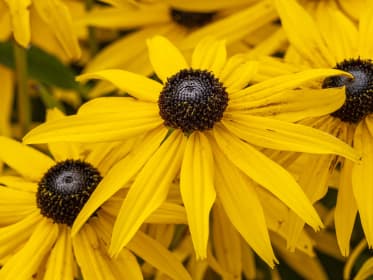
For a sunny autumn
1. Yellow coneflower
The yellow coneflower (Rudbeckia fulgida var. sullivantii) really lives up to its name with its bright yellow flowers. The sunny yellow flowers brighten the mood in the garden from August to October, attracting many insects like bees and butterflies in the process. The coneflower feels especially at home in a warm and sunny spot with humic soil that has normal levels of moisture.
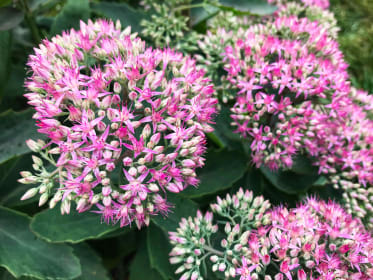
The ideal companion perennial
2. Tall stonecrop
The tall stonecrop (Sedum telephium) comes in different shapes and colours. While some varieties only reach 30 cm, making them well suited for smaller perennial beds, others can grow up to 70 cm tall. Depending on the variety, tall stonecrops delight us with their multitude of delicate flowers in pink, white or red from August to October. Their nutritious flowers make them a genuine magnet for all kinds of beneficial insect. As tall stonecrops cope relatively well with dry conditions and sunshine, they are not only suitable for semi-shaded flower beds in the garden but also for bright rockeries.

A splash of colour in the autumn flower bed
3. Autumn anemone
Thanks to its large flowers in shades of pink and white, the popular autumn anemone (Anemone hupehensis var. Japonica) also captivates its admirers from August to October. Unlike the stonecrop, it feels at home in shaded spots with rather moist to moderately moist soil. In addition to the expansive larger varieties, smaller and more compact autumn anemones are now also available. For example, autumn anemones such as the pink ‘Fantasy Red Riding Hood’ or ‘Fantasy Cinderella’ do not grow half a metre high, meaning they will also find room in smaller autumn flower beds.

An autumn gem
4. New York aster
The New York aster (Aster novi-belgii, Symphyotrichum novi-belgii) is one the most popular autumn flowers of all. Also known as New Belgium asters, these hardy perennials delight us with ray flowers in violet, red or pink. They love sunny spots and nutrient-rich, fresh loamy soil, where they will grow up to 150 cm tall and give you splashes of colour until well into November. On the other hand, the button aster (Aster dumosus hybrid), which is almost identical genetically, only grows to a height of 15-50 cm and is perfect for smaller beds.

A hint of floral magic
5. Heath aster
Alongside the New York aster, the heath aster (Aster ericoides), also known as the many-flower or white aster, makes for an enchanting sight with its countless small flowers ranging from purple to white. The flowers are barely larger than 10 cm and are an important source of nutrition for many beneficial insects from September until well into November. The plant feels especially at home in sunny spots with a humic-, nutrient-rich soil. Unlike the smaller button asters, heath asters are bushy and can reach a height of about 100 cm, meaning you should definitely allow them some space.

Flowers until December
6. Garden chrysanthemum
Also commonly known as winter asters, garden chrysanthemums (Chrysanthemum ×grandiflorum hybrids) delight us in the autumn and winter with their wonderful variety. There are tall varieties that can grow up to 120 cm high and smaller specimens that only reach 50 cm. Some garden chrysanthemums open their flowers as early as August, while others flower from October until the first frost. Some of these hardy perennials will delight you with their well-filled flowers, while others provide moments of magic with simple ray flowers. You can choose between a wide range of colours – from white to yellow and red to pink. One special feature is the pretty leaf colouring in autumn. Garden chrysanthemums will really appreciate it if you give them a sunny warm spot with soil that is porous, calcareous and rich in nutrients.

Unbridled floral pleasure
7. The winter hardy cranesbill
The cranesbill is not your typical autumn perennial but rather a perennial with an extremely long flowering period. The ‘Rozanne’ (Geranium hybrid) variety in particular delights us with an abundance of flowers lasting from June until the first frosts of November and repeatedly produces new violet flowers that attract many bees. It is also extremely easy to care for, robust and not very demanding. You can plant this pretty perennial in a semi-shaded to sunny spot without any problems. As far as soil characteristics are concerned, the cranesbill has no special requirements and will grow in both moist and dry soils. Thanks to its vigour, it is not only a beautiful companion in the perennial bed but also great for ground cover.
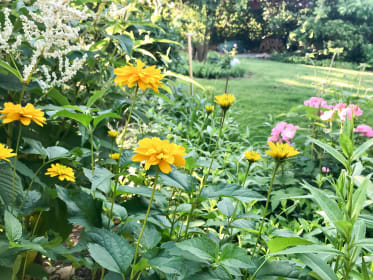
Sunny moments
8. The pale sunflower
The pale sunflower (Helianthus decapetalus) – not to be confused with the annual sunflower – is also one of the hardy perennials characterised by an extremely long flowering period. Its bright yellow flowers are a guarantee for sunny moments in the garden all summer long and into the autumn. Its tasty nectar makes it extremely popular among bees and it is especially fond of sunny locations. Although pale sunflowers are usually quite undemanding when it comes to soil, they like it to be rich in nutrients and are not averse to lime. Since the pale sunflower can grow up to 180 cm tall, depending on variety, a support or stick is helpful to prevent it from being blown over in the wind.

All-rounder in the garden
9. Common yarrow
The common yarrow (Achillea millefolium) is another plant for the perennial bed. This native perennial delights many beneficial insects from June to October with its countless small, mostly white flowers. Yarrows with different coloured flowers are now also available. For example, varieties such as the ‘Paprika’ and ‘Petra’ simply captivate their admirers with red flowers, the ‘Wesersandstein’ is delightful during the flowering period with light pink flowers and the ‘Credo’ offers something different with light yellow flowers.
This winter hardy perennial often grows in humus-rich soil. Depending on soil conditions – it grows taller on nutrient-rich soils than on poor soils, for example – it will grow to a height of 15-60 cm tall. The yarrow can be used as an individual plant, in flower meadows or in summer-autumn perennial beds.
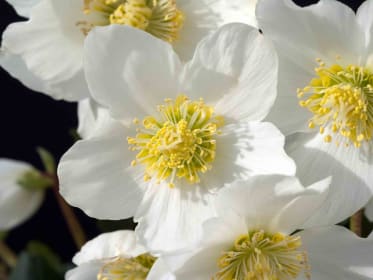
Winter’s coming
10. Christmas rose
The Christmas rose (Helleborus niger) is another beautiful perennial worthy of a place in the autumn flower bed. This pretty winter perennial only opens its elegant white flowers in the Advent season, thus forming a natural transition from the colourful autumn perennials to the bleaker winter season. Although the Christmas rose enjoys a sunny location during the winter, it won’t tolerate the blazing summer sun. Accordingly, a spot under a deciduous shrub that provides shade in the summer and sheds its leaves in the autumn is ideal. In addition, a nutrient-rich porous soil is recommended.
You can plant many other perennials in your autumn flower bed in addition to these ten autumn flowers. For example, the flowers of the gaura or purple coneflower will delight you until well into September, while the large-flowered tickseed, Stokes’ Aster, red bistort and heliopsis will still showcase their beautiful flowers as late as October. Allow yourself to be inspired by the floristic diversity and create a unique perennial bed for the autumn!
Products for an autumn flower bed
This might also interest you
